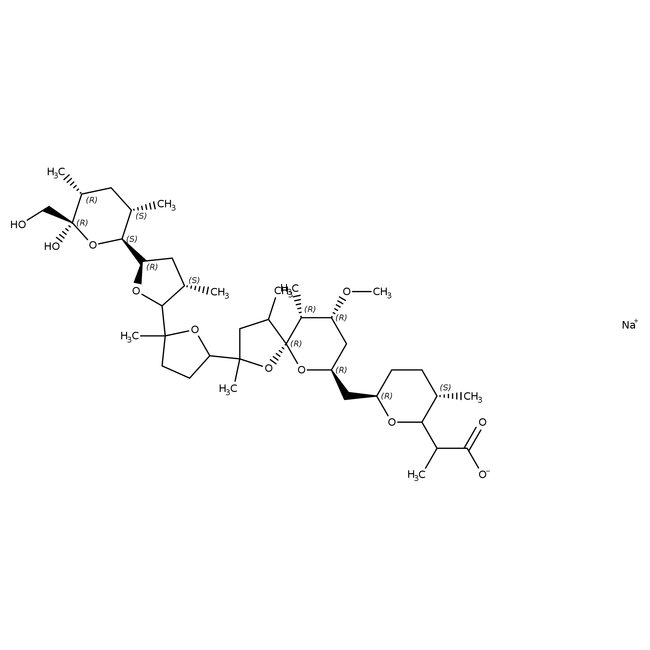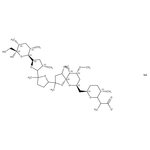Search Thermo Fisher Scientific
Nigericin sodium salt, 98+%
| Catalog Number | Quantity |
|---|---|
| ALFJ61349.MA | 10 mg |
H301-H315-H319-H335
Toxic if swallowed.
Causes skin irritation.
Causes serious eye irritation.
May cause respiratory irritation.
Nigericin sodium salt is a polyether ionophore which catalyzes the electroneutral exchange of alkali metal (K+) for H+ (antiport). It disrupts membrane potential and stimulates ATPase activity in mitochondria. It transports monovalent cations across membranes with the following specificity: K+ >Rb+ >Cs+ >>Na. It kills bacteria by facilitating the diffusion of ions across membranes. It is widely used in studies of the consequences of changes in membrane potential in variable systems.
This Thermo Scientific Chemicals brand product was originally part of the Alfa Aesar product portfolio. Some documentation and label information may refer to the legacy brand. The original Alfa Aesar product / item code or SKU reference has not changed as a part of the brand transition to Thermo Scientific Chemicals.
Nigericin sodium salt is a polyether ionophore which catalyzes the electroneutral exchange of alkali metal (K+) for H+ (antiport). It disrupts membrane potential and stimulates ATPase activity in mitochondria. It transports monovalent cations across membranes with the following specificity: K+ >Rb+ >Cs+ >>Na. It kills bacteria by facilitating the diffusion of ions across membranes. It is widely used in studies of the consequences of changes in membrane potential in variable systems.
Solubility
Soluble in chloroform, methanol or ethanol
Notes
Stable under recommended storage conditions. Incompatible with oxidizing agents, acids, bases and heat.
General References:
- K.Suzuki; K.Tohda; H.Aruga; M.Matsuzoe; H.Inoue; T.Shirai. Ion-selective electrodes based on natural carboxylic polyether antibiotics. Analytical chemistry. 1988, 60,(17), 1714-1721.
- Benjamin Rey; Damien Roussel; Caroline Romestaing; Maud Belouze; Jean-Louis Rouanet; Dominique Desplanches; Brigitte Sibille; Stephane Servais; Claude Duchamp. Up-regulation of avian uncoupling protein in cold-acclimated and hyperthyroid ducklings prevents reactive oxygen species production by skeletal muscle mitochondria. BMC Physiology. 2010, 10,5.



